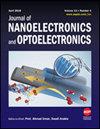Design and Numerical Analysis of Double Encoder-Swinnets-A Novel Swin Transformers-Based Diabetic Foot
IF 0.6
4区 工程技术
Q4 ENGINEERING, ELECTRICAL & ELECTRONIC
引用次数: 0
Abstract
Thermography is crucial for early diabetic foot (DF) diagnosis and accurate segmentation of ulcer-prone areas. However, existing segmentation methods fall short due to image complexities and ambiguities. Recent advancements in deep learning show promise, but they rely on color images, not thermal ones. This research introduces an automated, robust, and precise diabetic foot segmentation approach using a deep neural network based on U-Nets and modified Swin transformers. The unique attention mechanism known as the axial attention parallel module (A2PM) is combined with the Unet-based Swin transformer model for an efficient segmentation process to extract local foreground features. The combination of the modified Swin Transformer’s multi-headed attention networks enhances thermal color information integration, resulting in superior segmentation accuracy. In addition, the proposed model makes use of the stacking dilated convolution (SDC) approach to protect the deep features that could be lost in the up-sampling modules. The feature maps are immediately integrated at the encoder and decoder stages using the shortcut connection (ResConv route) based on the residually connected convolutional layer. Furthermore, this ResConv path is added serially before the encoder and decoder characteristics are combined. The model is tested on 124 diabetic and 100 healthy subjects, evaluating its performance with metrics like DICE, IoU, precision, and recall. The suggested approach outperforms current techniques in an experimental evaluation, achieving 99.5% DICE, 98.9% IoU, 99.33% precision, and 99.56% recall for diabetic thermal ulcer image segmentation.双编码器-斯温变压器--基于糖尿病足的新型斯温变压器的设计与数值分析
热成像技术对于糖尿病足(DF)的早期诊断和溃疡易发区的准确分割至关重要。然而,由于图像的复杂性和模糊性,现有的分割方法存在不足。最近在深度学习方面取得的进展显示了前景,但它们依赖于彩色图像,而不是热图像。本研究利用基于 U-Nets 和改进 Swin 变换器的深度神经网络,介绍了一种自动化、鲁棒性和精确的糖尿病足分割方法。被称为轴向注意力并行模块(A2PM)的独特注意力机制与基于 Unet 的斯温变换器模型相结合,可实现高效的分割过程,从而提取局部前景特征。修改后的 Swin 变换器多头注意力网络的组合增强了热颜色信息的整合,从而提高了分割精度。此外,所提出的模型还采用了堆叠扩张卷积(SDC)方法,以保护在上采样模块中可能丢失的深度特征。在编码器和解码器阶段,使用基于残差连接卷积层的捷径连接(ResConv 路径)立即整合特征图。此外,在结合编码器和解码器特征之前,会串行添加此 ResConv 路径。该模型在 124 名糖尿病患者和 100 名健康受试者身上进行了测试,用 DICE、IoU、精确度和召回率等指标评估其性能。在实验评估中,所建议的方法优于当前的技术,在糖尿病热溃疡图像分割方面达到了 99.5% 的 DICE、98.9% 的 IoU、99.33% 的精确度和 99.56% 的召回率。
本文章由计算机程序翻译,如有差异,请以英文原文为准。
求助全文
约1分钟内获得全文
求助全文
来源期刊

Journal of Nanoelectronics and Optoelectronics
工程技术-工程:电子与电气
自引率
16.70%
发文量
48
审稿时长
12.5 months
 求助内容:
求助内容: 应助结果提醒方式:
应助结果提醒方式:


